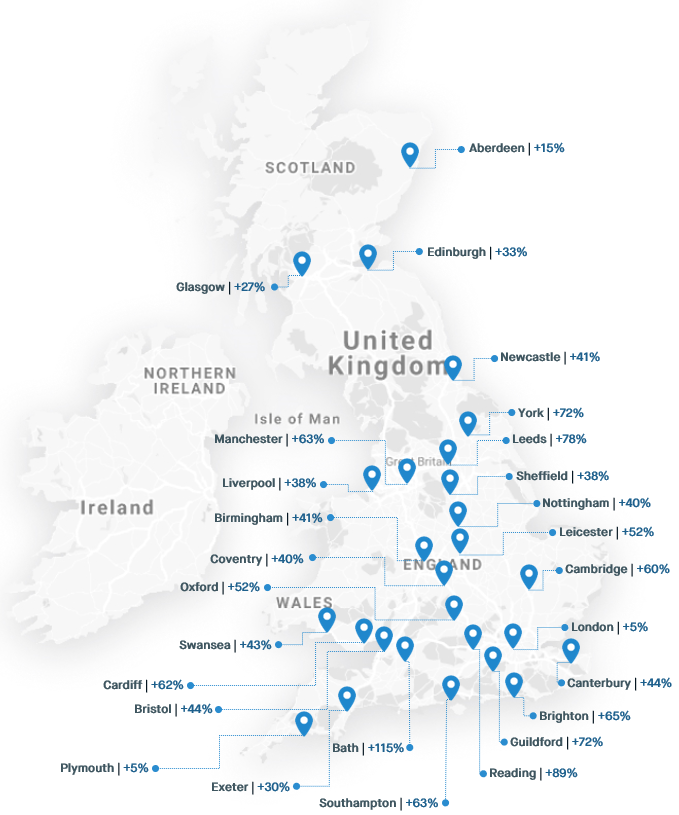
Student Accommodation Research: The PBSA Premium

Image courtesy of Flickr
The affordability of student accommodation is a subject area that has faced increased attention and various rent strikes in recent years are a testament to the frustration felt by students.
Whilst these strikes often relate to university managed purpose-built student accommodation (PBSA), by analysing more than 750k bed spaces advertised on StuRents.com, we can highlight the challenges also facing the private PBSA market.
The UK market has reported significant growth in PBSA over the last few years, with more than 32k beds added in 2019-20 alone, 81% of which is private accommodation.
However, not only is this growth not evenly distributed, the average rent per person per week (£pppw) being sought for this private PBSA varies widely.
Nationally, the average £pppw cost (ex-bills) outside of London for houses in multiple occupation (HMOs) is £92, whilst for private PBSA this figure stands at £128 pppw.
But as highlighted in Figure 1, the premium students are expected to pay based purely on the headline £pppw figure can, in the case of Bath, be north of 100% and in many cases is well above 50%.
Figure 1: The PBSA Premium
Source: StuRents.com
NB: The PBSA Premium is based off the average advertised £pppw (ex-bills) cost for HMOs versus PBSA
Whilst higher priced accommodation is primarily targeted towards international students, the volume of PBSA coming to market raises questions as to whether operators will need to broaden their customer base.
For example, approximately 84% of full-time students in Swansea are UK domiciled and with growth in supply likely to outstrip growth in demand in non-UK students, it's a segment that shouldn't be ignored.
In markets that face more challenging supply-demand fundamentals such as Plymouth, these pressures have resulted in a narrowing of the spread, which now stands at just 5%. Students can therefore live in accommodation that typically comes equipped with many more facilities compared to the average HMO at not much more cost.
One argument for continued investment into private PBSA is that students who would traditionally live in HMOs will instead live in PBSA, thereby releasing housing stock back into the residential market.
In reality, with PBSA commanding substantial headline premiums to much more affordable HMOs, this argument can be difficult to back. This is especially true for typically cash strapped domestic students already acutely aware of the impending levels of debt they face upon graduation.
Therefore, the challenge for operators of PBSA trying to attract UK students is to overcome this "premium" barrier. In some instances, shorter contract lengths for PBSA can reduce the overall cost of the tenancy agreement, aligning it more closely with the typical cost of a 52-week let associated with HMOs.
However, for students house hunting with a per person per week budget in mind, higher-priced accommodation may not even be on their radar, even if this comes with high-end facilities and a total tenancy cost that is perhaps more attractive than it first seems.
Analysis of student searches and the budgets being set whilst house hunting highlights this view, with the level of demand trailing off as the £pppw budget increases.
By understanding the supply of both PBSA and HMOs, and the level of demand at any given price, stakeholders can better understand the attractiveness of a proposed development from the eyes of the end-user and in markets that face an influx of PBSA this could make all the difference.
StuRents lists in excess of 750,000 student beds nationwide, covering both the HMO and PBSA sector. To understand more about our market-leading insights and data services visit: StuRents.com/student-property-research
Share


